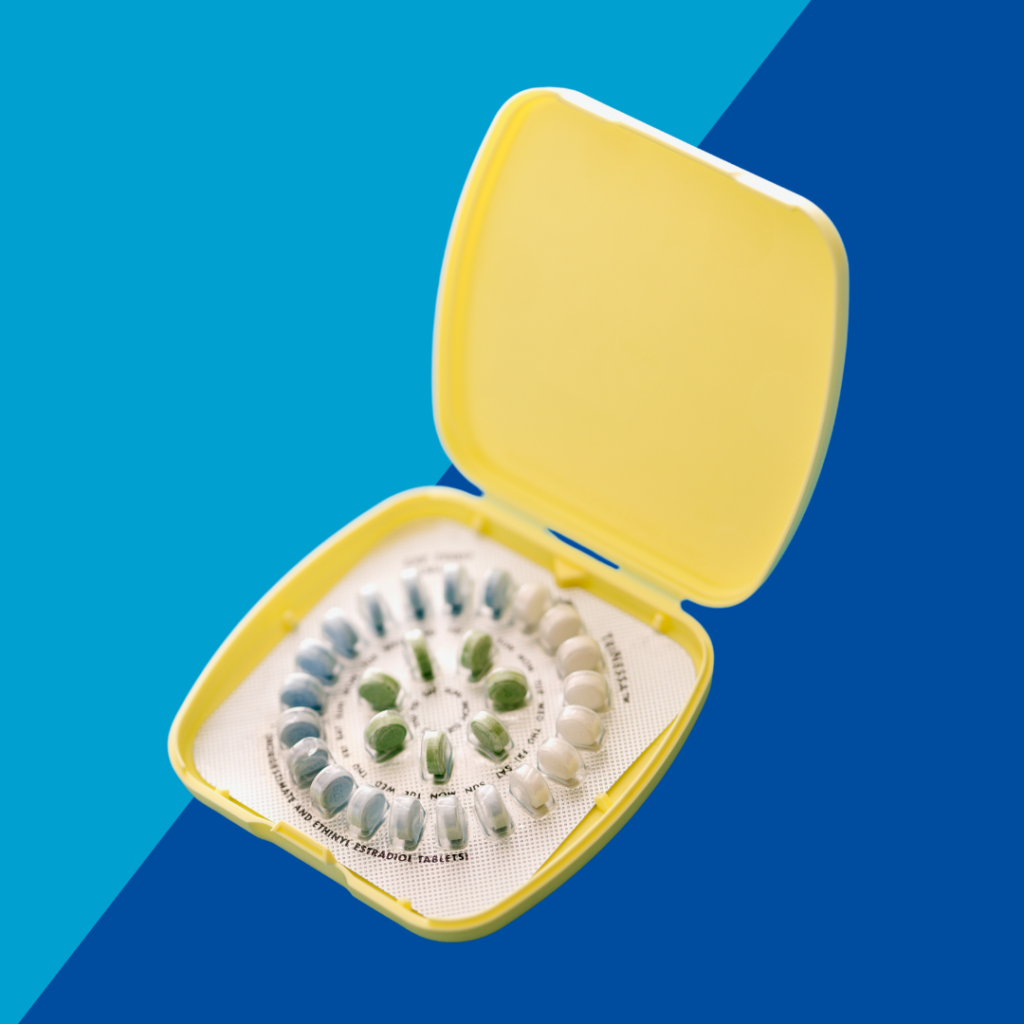What are your chances of getting pregnant on birth control?

Using birth control to prevent pregnancy? Here’s a quick math trick to help you visualize the risk of becoming pregnant.
Visualize this. You’re about to walk into a large theater where every 1 out of every 14 seats are red, the rest are blue. You’re told that if the seat number on your ticket brings you to a seat that is red, it means—surprise! You’re pregnant!

Would you feel at ease because the 1 in 14 odds feel low? Or do the odds feel high enough to make you nervous? Now, what if instead, you were told that 93% of the seats are blue, and 7% are red? How do you think you would feel as you walked to find out the color of your seat?
The Birth Control Math Trick
The odds of getting a red seat in both scenarios are exactly the same. A 7% chance of getting a red seat is equivalent to a 1 in 14 chance. But the positive framing of the “93% blue” figure can trick our brains into thinking the risk of getting a red seat is lower than it actually is. By the way—93% is the efficacy rate* of the birth control ring with typical use, which takes into account that birth control isn’t always used perfectly in real life—like when you forget to put a new ring in on time. (With perfect use, the ring is 99% effective.)
So, next time you see a birth control efficacy rate, change that percentage to an equivalent fraction that becomes “1 out of ___” to help your brain better visualize the risk of becoming pregnant while using that method. Our Birth Control Methods 101 zine shows you how to do this math if you need an example.
No Birth Control Method is Perfect at Preventing Pregnancy
Birth control is awesome at greatly reducing the risk of pregnancy, but it is possible to become pregnant while using any birth control method, even after getting tubal ligation or when using a long-acting contraceptive like an IUD. The Paragard IUD, for example, uses positive framing on the front page of their website: “Over 99% Effective.” This statement is true, but it can trick people’s brains to round up to 100% (my younger self included), which can lead to the misconception that it is not possible to become pregnant if you have an IUD.
To be exact, the Paragard IUD is 99.4% effective. Using the birth control math trick, that is 1 out of every 167 people using Paragard who will become pregnant. I’ve been that one person—I still have the card that says my IUD is good until 2032, but I also have an amazing 2.5 year old.
Combining Birth Control Methods to Further Lower Pregnancy Risk
The experience of choosing a birth control method can feel like you only get to order one thing off the menu. Birth control advertisements contribute to this feeling because they’re meant to be exactly that—advertisements—not necessarily educational material with your best interest in mind.
But for people who want to keep their risk of getting pregnant as low as possible, combining a hormonal or non-hormonal birth control method like birth control pills or an IUD with one of these methods further decreases your odds of becoming pregnant:
- Barrier methods (e.g., condoms)
- Withdrawal/Pull Out Method
- Fertility awareness
Let’s do the math to show how powerful combining methods can be. Back to our ring example: the ring is 93% effective with typical use (1 in 14 odds). If the ring is combined with condoms (87% effective with typical use, or 1 in 8 odds), we multiply those odds together to see what the chance of getting pregnant is now:

Let’s go back to our theater scenario. How much better does it feel to know that only 1 out of 112 seats are red, compared to 1 out of 14 or 1 out of 8?
Choosing The Best Birth Control Method(s) For You
This birth control math trick (changing efficacy rates to a “1 out of ___” figure) can help you decide if a birth control method is right for you depending on the odds of getting pregnant you are comfortable with.
To find the best method or methods of birth control for you, try our free birth control quiz or check out the ICAN! Birth Control Options page for more guidance.
Once you have a plan, find a free or low cost birth control provider in Illinois.
*Efficacy rate: Birth control efficacy rates describe how effective birth control methods are at preventing pregnancy. Efficacy rates are typically determined when birth control methods are tested in clinical trials, and oftentimes represent the rate of pregnancies that occurred after one year of use. The efficacy rates of two different brands of the same type of birth control may not be the same. The best way to know the exact efficacy rate of a birth control method you use or are considering using is to read the information included in the packaging of that method, or to ask a doctor, pharmacist, or other trusted health advisor.




